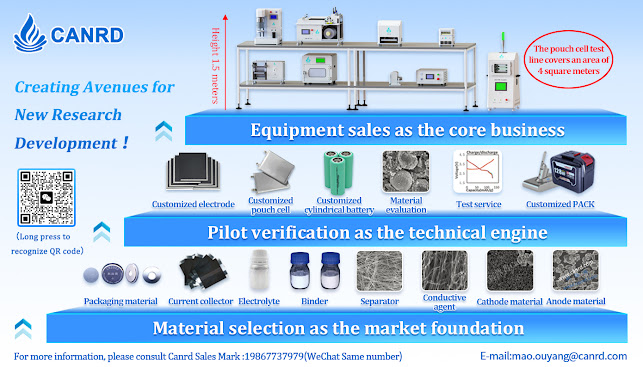【Overview】:
The rolling of battery electrodes involves the friction between the rollers and the electrode, which draws the electrode sheet into the gap between the rotating rollers. During this process, the electrode sheet undergoes compression and deformation. Unlike the rolling of steel, where the rolling process mainly causes the material to extend longitudinally and widen laterally without a change in density, the rolling of battery electrodes focuses on the compaction of active material on both the positive and negative electrode sheets. During this process, the particles undergo migration, rearrangement, and embedding, resulting in reduced voids between particles and a denser arrangement. The purpose is to increase the compaction density of the positive or negative electrode materials. Proper compaction density can increase battery discharge capacity, reduce internal resistance, minimize polarization loss, extend cycle life, and improve the utilization rate of lithium-ion batteries.
Roll Pressing Process of Lithium-ion Battery Electrodes
Roll Pressing Process of Lithium-ion Battery Electrodes
【Overview】:
The rolling of battery electrodes involves the friction between the rollers and the electrode, which draws the electrode sheet into the gap between the rotating rollers. During this process, the electrode sheet undergoes compression and deformation. Unlike the rolling of steel, where the rolling process mainly causes the material to extend longitudinally and widen laterally without a change in density, the rolling of battery electrodes focuses on the compaction of active material on both the positive and negative electrode sheets. During this process, the particles undergo migration, rearrangement, and embedding, resulting in reduced voids between particles and a denser arrangement. The purpose is to increase the compaction density of the positive or negative electrode materials. Proper compaction density can increase battery discharge capacity, reduce internal resistance, minimize polarization loss, extend cycle life, and improve the utilization rate of lithium-ion batteries.
Battery Cell Section: Introduction to the Manufacturing Process of Lithium-ion Battery Pouch Cells
Introduction
Soft-pack battery cells, referring to cells using aluminum-plastic composite film as packaging material, have seen widespread application in the lithium-ion battery field due to their high energy density, enhanced safety, and flexible design. Below, I will provide a detailed introduction to the manufacturing process of soft-pack battery cells, covering material preparation, critical steps, and post-processing aspects.
An Overview of the Four Steps in the Formation of Lithium Batteries
The formation process is an indispensable step in the manufacturing of lithium-ion batteries, as it directly affects the battery’s performan...

-
Effects of Conductive Agents and Binders on Compression and Compactability of NCM Powders In the field of energy development, lithium-ion b...
-
Determined to win ‖ Sun Jie's team from Tianjin University: Micro-multifunctional additives significantly improve the ultra-high voltage...
-
Single-sided pole piece manufacturing method This issue introduces the production process of single-sided pole pieces to help you obtain s...
-
The "Three Musketeers" of Lithium Batteries: Lithium Battery Packaging Film, Lithium Battery Separator and Battery Cell Blue Film ...
-
Interfacial friction makes the vertical structure of lithium metal batteries summary A practical high-energy-density lithium metal battery r...
-
First author: Meng Li Corresponding author: Boryann Liaw Corresponding Unit: Idaho National Laboratory, USA Achievements at a Glance This ...
-
Lithium cobalt oxide is the first commercialized cathode material for lithium-ion batteries. Its theoretical gram capacity after complete de...






